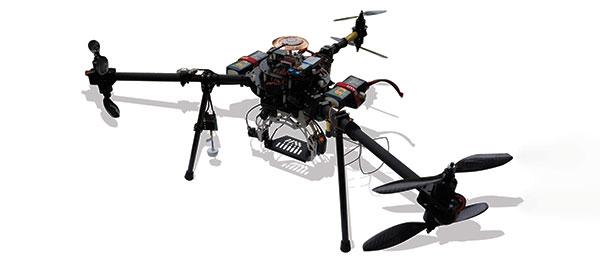Written by Terry Dunn Electrics
As seen in the February 2021 issue of Model Aviation.
Electrics
Image

Some Things Never Change
I became involved with electric-powered RC models in the late 1990s. At that time, most power systems still used brushed motors and NiCd batteries. Achieving good performance from a model often required some tinkering and experimentation. In fact, that is what initially attracted me to electric power. Each new project was like a brainteaser. With a given setup, I might have changed the cell count of the battery, the propeller size, the gear ratio, or some combination of those things in a never-ending search for better performance. We often pushed motors and batteries well beyond their advertised limits. More often than not, electric modelers of that era had to strike a balance between performance and equipment longevity. You could only push a motor or battery so hard before it overheated or self-destructed in some dramatic fashion. Because we worked within such narrow margins, having accurate data was vital to success. Our primary tool for obtaining that data was the Astro Flight Whattmeter. The Whattmeter (aka wattmeter) is a handy device that is inserted between the battery and ESC. It displays the system’s voltage, current (amps), power (watts), and electric charge (milliamp-hours; mAh) on an LCD display. That’s all great information to help you better understand whether you still have some headroom for more power, or whether a meltdown is imminent! You can also place a wattmeter between your charger and battery to make sure the battery is accepting the expected amount of charge and reaching the proper voltage.Image

Data on a Budget
I still have my original Astro Flight Whattmeter and use it regularly. Throughout the years, numerous hobby companies have released their own variations on the wattmeter theme. For example, I also have a Great Planes PowerMatch Power Meter. It is basically a wattmeter with a few extra features and a built-in battery balancer. I would trust a wattmeter from any well-known RC company for the purposes that I have previously described. Among the various wattmeters I have seen, there are minor differences, but they all function essentially the same way. I recently saw reports from a few modelers who were using wattmeters that they purchased from Amazon at low prices. That got my attention because some of the RC equipment found on Amazon is, quite frankly, junk! My hunch was that these inexpensive wattmeters would be inaccurate and/or unreliable. Perhaps the only thing worse than no data at all is shoddy data. I decided to buy one of these budget Amazon wattmeters and compare it with my trusted Astro Flight and Great Planes units. For approximately $15, I obtained a wattmeter from HTRC, a company based in China. It did not come with battery connectors, so I soldered on a set of Deans Ultra Plugs. The unit appeared to be well built. I could not find any obvious physical or cosmetic defects. The one-page instruction sheet is typical for imported electronics. Some information is confusing because of poor translation. There are also contradictions. One section stated that the wattmeter can be powered by an auxiliary battery of at least 4.8 volts (up to 60 volts), yet a diagram indicated that the auxiliary battery must be at least 8 volts. A quick test revealed that the 8-volt value is correct. In order to test the accuracy of the HTRC unit, I measured data from three different models with power systems ranging from approximately 40 watts to 800 watts. I then compared data collected with my Astro Flight and Great Planes units. I limited variables as much as I could by using the same battery for each model and topping off its charge between each test. My results were encouraging. All of the data I collected with the three wattmeters differed by no more than 5%. That’s well within my margin of error when honing or troubleshooting power systems. At this point, I have no reason to question results from the HTRC wattmeter. I can’t speak to other wattmeters offered on Amazon, but this one seems legitimate. My only gripe so far is that the LCD screen is difficult to read in sunlight. I’ll report back if my long-term testing reveals any other issues.Get Smart
If you’re an electric flier without a wattmeter at your disposal, you’re now officially out of excuses. A tachometer is useful, and a servo driver is handy, but a wattmeter is essential if you want to understand, troubleshoot, and optimize your electric-powered models.Image











Comments
I've used the Astro Flight Whattmeter for many years
It's a solid, accurate, reliable instrument, and I highly recommend it. I've checked its calibration against serious lab-grade equipment, and it's good. Mine has a separate load connector to plug directly into an R/C receiver. My unit can usually be found plugged into a West Mountain Radio RigRunner power panel I use for 12V emergency lighting with some LED light bars when the power goes out.
wattmeter
I thought maybe you would explain how to use it and what the readings ment. But no! I don't know any more than I did before I red the article.
At Aliexpress.com you can
At Aliexpress.com you can pickup a watt meter for $10 shipped, you might wait few weeks though.
What a meter review
Much rather see how to use and what the numbers mean versus a review of a cheap what a meter
Add new comment